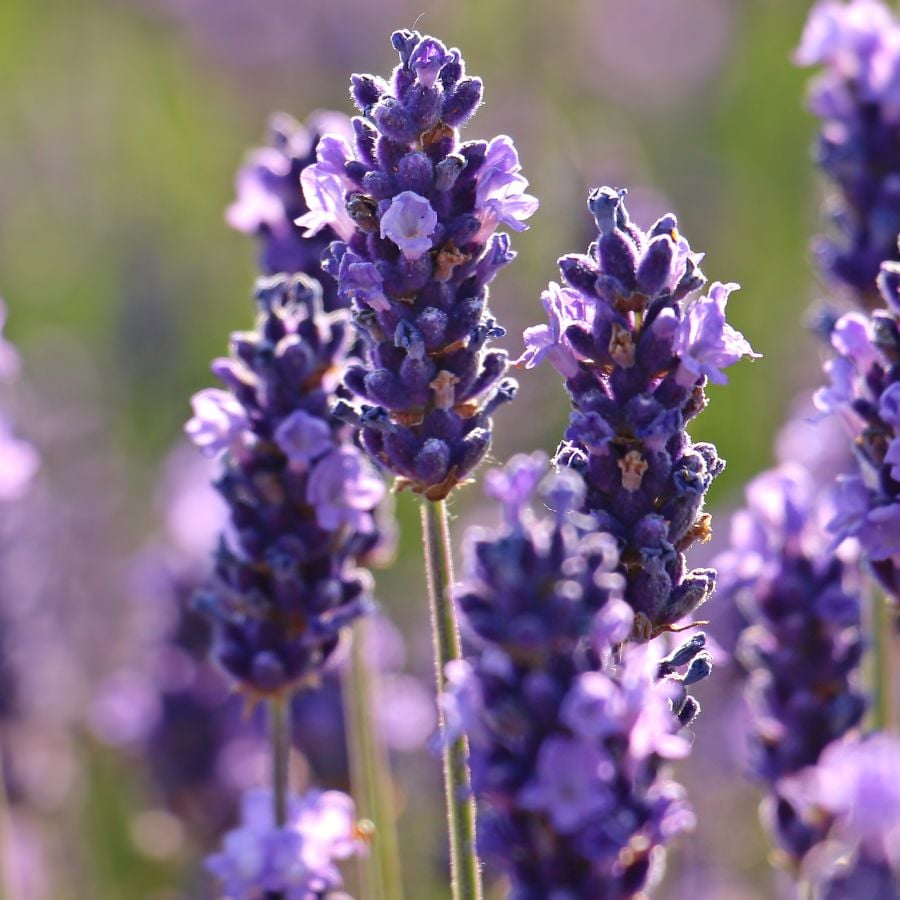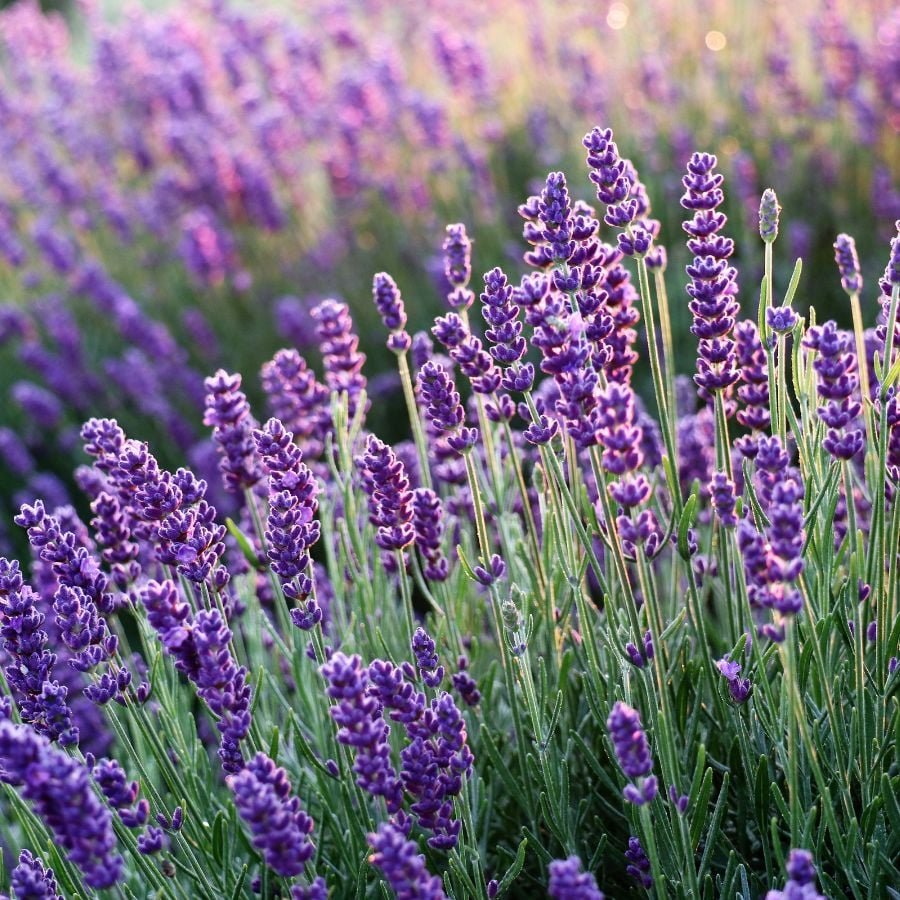Ever walked past a garden with a stunning lavender tree and wondered why yours just looks like a sad, sprawling shrub? You’re not alone.
I was shocked to discover that what most people call a “lavender tree” isn’t even a tree at all.
It’s a cleverly trained perennial that can transform your garden into a fragrant paradise for years, not just seasons. And I’m about to spill all the secrets.
Why Your Lavender Dreams Keep Dying (And How to Fix It)
Most people make this mistake with their lavender: they treat it like other garden plants. Big mistake. Lavender is basically the desert-loving diva of your garden. It craves sun like teenagers crave social media and hates wet feet more than cats hate baths.

Did you know that 75% of lavender failures occur due to overwatering? Your lavender is trying to tell you something important when it gets yellow leaves and woody stems: “Stop drowning me!”
Choose Your Fighter: Picking the Perfect Lavender Variety
The secret most plant experts won’t tell you is that picking the wrong variety for your climate is setting yourself up for heartbreak before you even begin.
- English Lavender (Lavandula angustifolia): The hardy champion for cooler climates (USDA zones 5-8). Think of it as the reliable friend who shows up even when the weather is miserable.
- French Lavender (Lavandula dentata): The warm-weather socialite that thrives in zones 8-10. It’s gorgeous but high-maintenance in colder areas.
- Spanish Lavender (Lavandula stoechas): The Mediterranean showoff with those dramatic “rabbit ear” flowers. Also prefers zones 8-10.
- Lavender × intermedia: The resilient hybrid that handles humidity better than pure varieties, like having waterproof mascara for your garden.
For true lavender tree success, English varieties often train best into the tree form we’re after. Their sturdier stems can support the weight of that lollipop shape we’re going for.
Location, Location, Location: The Sun-Soaked Sweet Spot
Forget what you’ve heard about partial sun being enough. Lavender needs a sunbathing session that would make a lifeguard nervous, at least 6-8 hours of direct sunlight daily. Think of your sunniest spot, then make it sunnier.
The game-changer for your lavender isn’t just sun, though. It’s drainage. If water pools in the spot for more than 10 minutes after a downpour, your lavender will basically be wearing wet socks forever. Nobody wants that.
Soil That Makes Lavender Sing: The Perfect Recipe
Lavender’s Mediterranean roots mean it evolved in poor, rocky soil that would make other plants stage a revolt. Your rich, loamy garden soil? It’s basically a five-course meal when lavender prefers intermittent fasting.

Create the perfect lavender cocktail:
- 2 parts native soil
- 1 part coarse sand or fine gravel
- 1 part perlite or pumice
- A sprinkle of lime if your soil pH is below 6.5 (most lavender varieties thrive at 6.5-7.5 pH)
(If you’re thinking, “But I don’t want to mix all that!” I hear you. But this 10-minute soil prep will save you from months of watching your lavender suffer a slow, dramatic death.)
The Tree-Training Transformation: From Shrub to Spectacular
Here’s where the magic happens. Creating a lavender “tree” is really about strategic pruning to create that lollipop shape that makes everyone stop and stare.
The difference between amateur and pro plant parents is simply knowing how to prune for structure:
- Year One: Select a strong central stem and remove competing stems at the base. Remove lower branches, leaving the top 1/3 untouched.
- Year Two: Continue clearing the trunk area, gradually raising the canopy like you’re slowly revealing a masterpiece.
- Year Three: Shape the top into a rounded form by trimming after the first bloom, but avoid cutting into old, woody stems. They won’t regrow!
For established plants, prune twice yearly: lightly in early spring and more thoroughly after the first flowering. Never cut into the old woody parts. Lavender doesn’t forgive that mistake!
The Moisture Mystery: Water Less, Bloom More
Your lavender should be treated like that friend who only wants to hear from you once in a while. Overwatering is the silent killer of lavender dreams.
- First month after planting: Water deeply once a week
- Established plants: Every 2-3 weeks during the growing season, and almost never in winter
- Container plants: Wait until the top 2 inches of soil feel completely dry
The breakthrough technique? Water at the base only, keeping those silvery leaves bone dry. Wet foliage is an invitation for fungal problems to invade and destroy your hard work.
Feeding Your Lavender: Less is More (Much More!)
Lavender is the intermittent-fasting champion of the plant world. Overfertilizing is like forcing an athlete to eat cake before a marathon. You’ll get lots of leafy growth and hardly any flowers.

One application of slow-release, balanced fertilizer in early spring is all your lavender tree needs for the entire year. That’s it! If your soil is already decent, you might not need to fertilize at all.
The Viral Lavender Hacks That Actually Work
Not all garden hacks deserve your time, but these lavender boosters are the real deal:
- The Epsom Salt Secret: Dissolve 1 tablespoon in a gallon of water and apply monthly during the growing season. The magnesium sulfate is like a bloom-boosting energy drink.
- The Stone Mulch Trick: Surround your lavender with white gravel or small stones. They reflect light to the plant, keep roots warm, and prevent humidity-causing organic mulch from touching the stems.
- The Cinnamon Sprinkle: Dusting cinnamon on the soil surface acts as a mild fungicide and deters certain pests without chemicals.
Year-Round Care: The Seasonal Success Calendar
Treat your lavender tree like it has different personalities throughout the year:
- Spring: Prune, fertilize once, resume regular watering as growth begins
- Summer: Deadhead spent blooms to encourage more flowering, protect from excessive rain
- Fall: Final light pruning, reduce watering, add gravel mulch
- Winter: Almost no water, protect from harsh winds in colder zones with burlap screens
Remember: lavender doesn’t need your helicopter parenting. Sometimes the most loving thing you can do is leave it alone!
With these techniques, your lavender won’t just survive. It will transform into that spectacular tree form that makes neighbors slow down as they drive past.
The best part? A properly maintained lavender tree can thrive for 10-15 years, making it one of the most rewarding plants in your garden.
So what are you waiting for? Your journey from sad shrub to stunning lavender tree starts now!

